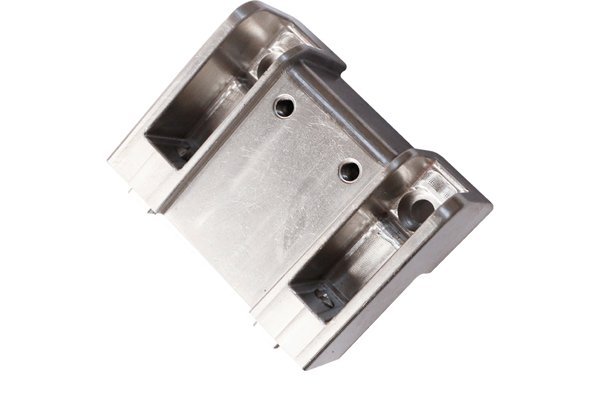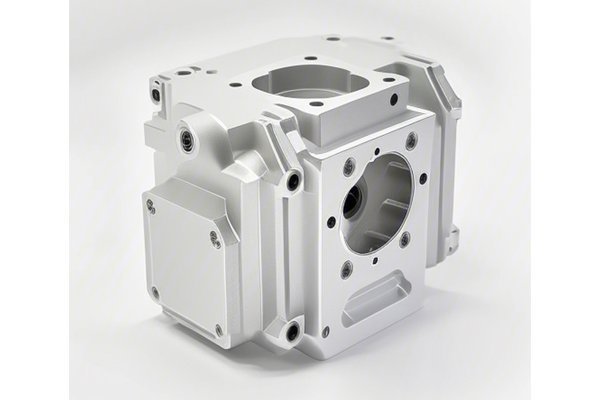Opening
Did you know that CNC machining—a process powered by computers to manufacture parts—has revolutionized how we produce everything from everyday consumer goods to complex aerospace components? In fact, research indicates that the global CNC machining market will reach a staggering $100 billion by
Understanding CNC Machining
Before diving into the specifics of processing materials, let’s define what CNC machining is. CNC, or Computer Numerical Control machining, refers to the automated control of machining tools (like drills, lathes, and mills) via a computer. The skills required for CNC machining encompass a blend of mechanical and electronic dimensions, allowing for high precision and repeatability in the manufacturing process.
CNC machines interpret a design (usually created in CAD software) and convert it into a machine language that directs the cutting tools on how to create the intended part. This ensures that, irrespective of the complexity of the design, it can be executed consistently and accurately.
—
Step-by-Step Guide to Processing Different Materials
CNC machining can accommodate a wide range of materials, including metals, plastics, composites, and even wood. Each type of material presents unique challenges and requires tailored strategies for successful processing. Below are comprehensive guides to handling various materials effectively.
Common Metals: Aluminum, Stainless Steel, Brass, Copper, Titanium, etc.
a. Material Selection
Select a metal based on its properties suited to your application. For instance, aluminum is lightweight and corrosion-resistant, while titanium is ideal for high-stress applications.
b. Tool Selection
Use different tooling options based on the metal chosen. HSS (High Speed Steel) tools might be suitable for materials like aluminum, but carbide tools are better suited for stainless steel due to their hardness.
c. Cutting Parameters
Adjusting cutting speed, feed rate, and depth of cut is vital. For instance, stainless steel typically requires slower feed rates and lower spindle speeds compared to softer metals.
d. Coolant Usage
Incorporate coolant to dissipate heat and reduce tool wear. Types of coolant include water-soluble oils or synthetic fluids tailored for the specific machining requirements.
e. Finishing Techniques
Post-process the machined parts with finishing techniques such as polishing, anodizing, or coating to enhance surface quality and durability.
Common Plastics: ABS, Polycarbonate (PC), Polypropylene (PP), Nylon (PA), etc.
a. Material Properties
Understand the physical properties of plastics. For example, Nylon has excellent wear resistance but is moisture-sensitive and may require drying before machining.
b. Tooling and Cutting Strategy
Use sharp tools specifically designed for plastics. Generally, a higher spindle speed is advisable, along with optimally set feed rates, to avoid melting or warping the material.
c. Chip Control
Effective chip removal is crucial due to the lower thermal conductivity of plastics. Use vacuum systems for effective chip extraction or design chip breakers in your tools.

d. Finishing Options
Post-process plastics may require sanding, polishing, or coating to improve the aesthetic and functional attributes of the finished part.
Common Composites: Carbon Fiber, Fiberglass, etc.
a. Layering Consideration
Machining composites often requires knowledge of their layered structure. Adjust cutting depth to avoid excessive fiber pull-out during the machining process.
b. Tool Selection
Use specialized tooling, such as diamond-coated bits or cutting tools designed with low friction and high wear resistance.
c. Dust Management
Control dust generation, as composite dust can be hazardous. Ensure the appropriate dust extraction systems are in place to maintain a safe work environment.
d. Finishing Techniques
Consider water jetting or ultrasonic cleaning techniques rather than traditional sanding or polishing, as these could damage the composite structure.
Common Types: Hardwood, Softwood, Plywood, MDF, etc.
a. Material Type Consideration
Select the right wood based on the end-use. Hardwoods offer durability, while softwoods are easier to machine and more cost-effective.
b. Tooling
Use sharp, high-helix cutters to produce clean cuts without tearing the grain. Router bits and end mills tailored for wood can ensure better results.
c. Feed Rates
Adjust feed rates accordingly to reduce the chance of splintering. A slower feed rate helps in achieving a clean edge finish.
d. Finishing Processes
Common finishing techniques include sanding, staining, and varnishing. Pay particular attention to the finish as wood surfaces can absorb and react to different finishing materials differently.
—
Processing different materials in CNC machining is a meticulous yet rewarding endeavor that allows manufacturers to achieve extraordinary precision and quality in their products. Understanding the unique properties, challenges, and processing techniques applicable to metals, plastics, composites, and wood is essential for success in this field.
From the initial selection of materials and tooling to the fine-tuning of cutting parameters and post-processing techniques, each step plays a crucial role in the final outcome of the machined part. As industries continue leveraging advancements in CNC machining technology, mastering these processes becomes increasingly important.
So, whether you’re a seasoned professional or a newcomer to CNC machining, having a solid foundation in material processing can foster innovation, enhance productivity, and ensure competitiveness in the marketplace. CNC machining is more than just a technical skill; it’s an art form interlinked with technology, and understanding it opens up endless possibilities.
Ultimately, investing your time in learning about the intricacies of CNC machining can lead to extraordinary results, ensuring your capabilities stay relevant in a rapidly evolving industry. This comprehensive guide serves as a stepping stone towards mastering CNC machining and highlights its importance in today’s manufacturing landscape. Remember, the precision and quality of your work will significantly depend on how well you understand and execute the processing of different materials.






